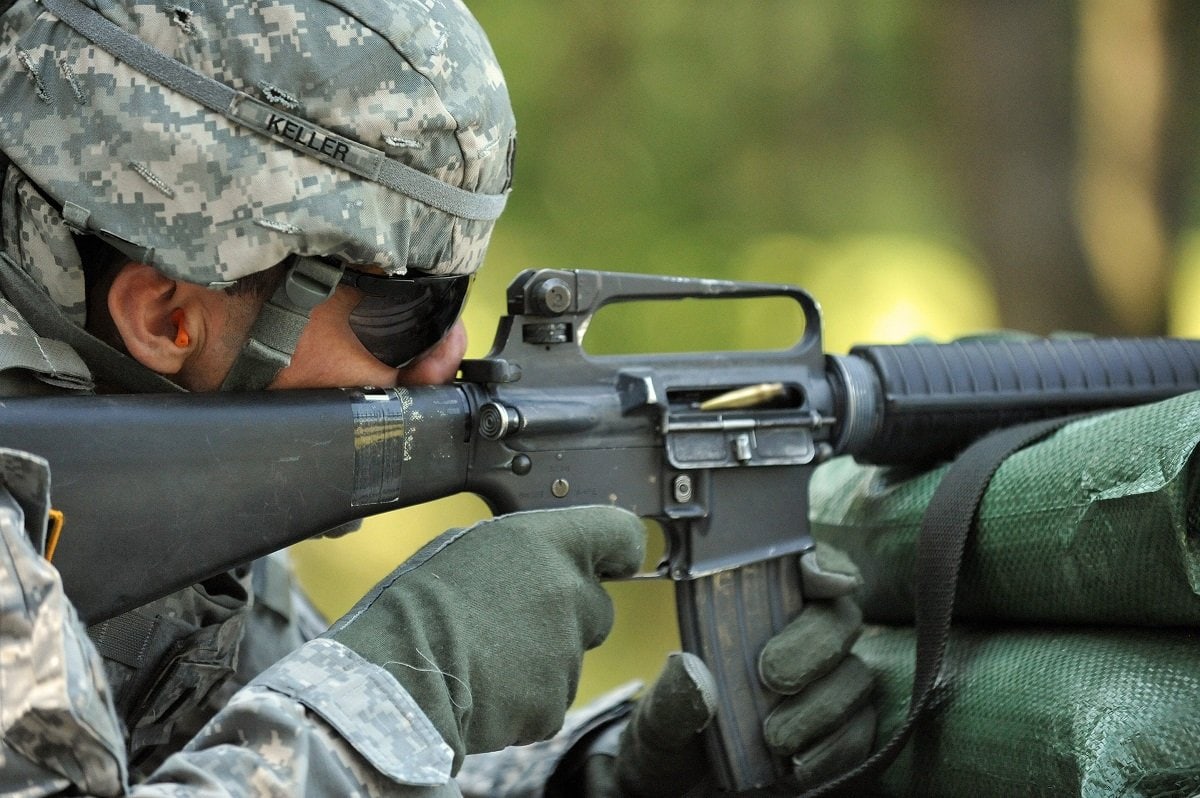Facts You Didn’t Know About the M16 – The United States Army announced on April 19, 2022, that it had awarded Sig Sauer a 10-year firm-fixed follow-on production contract to manufacture the Next Generation Squad Weapon variations, one of which – the XM5 rifle – would replace the M4/M4A1 carbine. That will mark the official end of the line for the M16 series, as the M4 was essentially a shortened and updated version of the military’s assault rifle that first entered service in 1964.
The family of military rifles was adapted from the ArmaLite AR-15, and was first deployed for jungle warfare operations during the Vietnam War. In 1969, the improved M16A1 replaced the M14 to become the U.S. military’s standard service rifle. It has gone on to become the longest continuously serving rifle in U.S. military history.
Millions Served
A lot of M16s in various versions have been produced, and it has been widely adopted by militaries and paramilitary forces around the world.
With some eight million manufactured, it is the most-produced 5.56x45mm weapon in service today. The most recent version, the M16A4 – the fourth generation in the series – was adopted in 1997. It was equipped with a removable carry handle, and it is fitted with a Picatinny rail for mounting optics and other ancillary devices.
The M16A4 is also notable in that it has no “full-auto mode.” After the Vietnam War, the U.S. military examined the use of its M16 assault rifles in combat. It was determined that firing on full-auto past three rounds largely resulted in a waste of ammunition. The full-auto firing mode was replaced with a three-round burst mode.
Missing the Target
Apart from shooting aficionados and firearms history buffs, few can actually name the inventor of the AR-15/M16. That would be Eugene Stoner (November 22, 1922 – April 24, 1997), a United States Marine Corps veteran and engineer who worked at ArmaLite, a division of Fairchild Engine & Airplane Corporation. He was no John Browning, and had more misses than hits initially when it came to firearms design.
While at ArmaLite, he designed a series of prototype small arms, including the AR-3, AR-9, AR-11, and AR-12, none of which saw significant production. In fact, his only really successful design had been the AR-5 survival rifle, a bolt action takedown rifle that was chambered for the .22 Hornet cartridge.
With a hit under his belt, Stoner then turned his attention to work on the revolutionary ArmaLite AR-10, a select-fire infantry rifle that was chambered for the 7.62x51mm NATO cartridge. It showed promise, but not enough at the time to interest the military. He was given a chance to refine it, and that resulted in the AR-15 – a firearm that went on to define his career. Though Stoner didn’t become famous from his creation, he reportedly became very rich from it, as he was paid $1 for every single M16 produced.
A Comic Book Trained the Troops
The weapon had quite the baptism of fire in Vietnam; M16s were prone to jamming, made worse by the fact that the firearm was wrongly touted at the time as being “self-cleaning.”
As a result, the M-16 earned the nickname “Jamming Jenny.”
To encourage proper care of the M16 the U.S. military responded by issuing a comic book. It was written to explain the tools for cleaning the gun as well as the importance of regular maintenance in a way that differed from past manuals.
The 32-page pamphlet/comic, The M-16A1 Rifle: Operation and Preventative Maintenance, was written by noted cartoonist William Erwin Eisner, and it was a key departure from the traditional manuals that the War Department had issued for decades. Instead of relying mostly on the text and black and white photos, it featured colorful illustrations, and it also featured plenty of sexual innuendos including a buxom blonde who offers instructions with catchy subheads such as “How To Strip Your Baby” and “Sweet-16.” Reprints are now available on Amazon.com.
Featured in Time Magazine
The Soviets had kept tight wraps on the development of its AK-47 following World War II, and the now-infamous firearm was never officially announced or introduced to the world .
The first time the AK-47 was even seen by western observers was during the 1956 Budapest Uprising – while the AR-15 was rolled out to the world in the most American of ways.
In 1963, Arthur Rickerby of Colt demonstrated the AR-15 for Time and LIFE magazines with 1962 Miss America pageant winner Maria Fletcher holding the weapon.
That introduction of the AR-15 has largely been forgotten simply because the timing of the publication of the article and photos was rather ominous. Time ran the article, titled “Corporations: Colt’s New Rifle,” in the issue dated November 22, 1963, the same day that President John F. Kennedy was assassinated in Dallas, Texas.
Interestingly it was also in Dallas where the Secret Service agents had been issued the AR-15 for the first time. That has led to the conspiracy theory that Secret Service agent George Hickey may have accidentally been the infamous “second shooter.”
Expert Biography: A Senior Editor for 1945, Peter Suciu is a Michigan-based writer who has contributed to more than four dozen magazines, newspapers, and websites with over 3,000 published pieces over a twenty-year career in journalism. He regularly writes about military hardware, firearms history, cybersecurity, and international affairs. Peter is also a Contributing Writer for Forbes. You can follow him on Twitter: @PeterSuciu.

